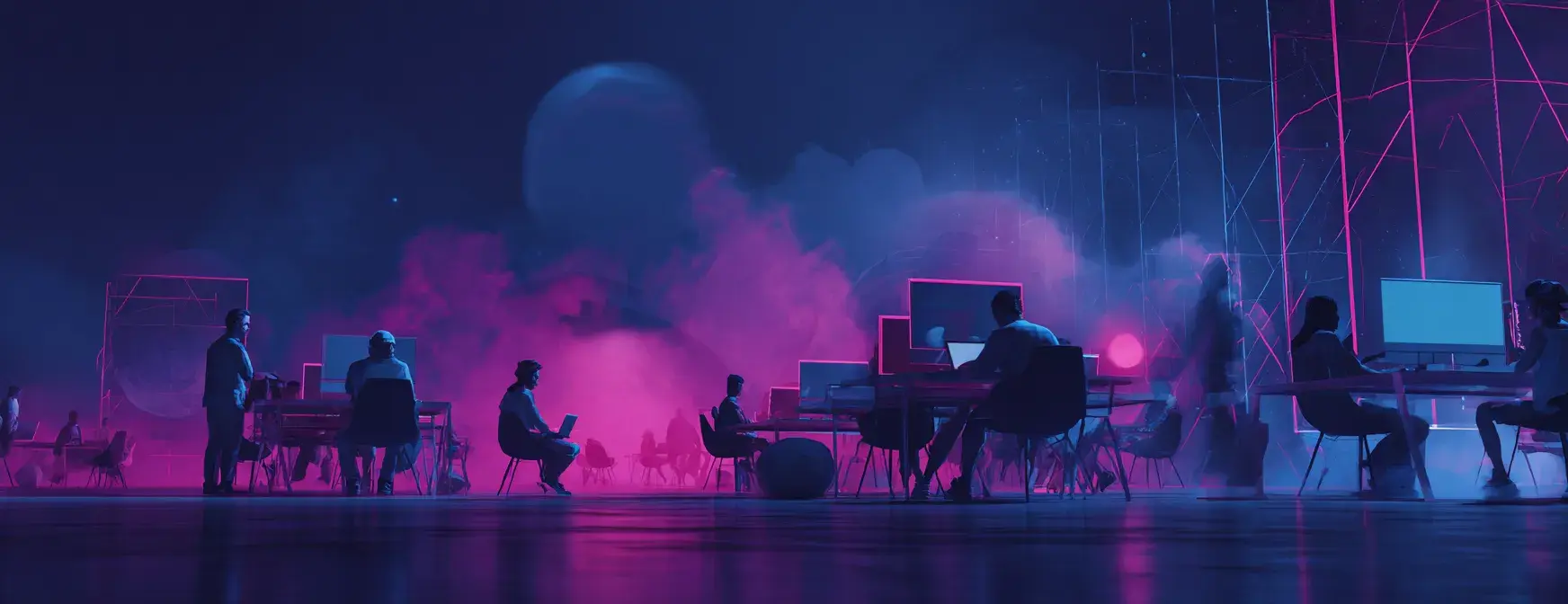Share this
RSA Recap: You Do Not Have Any Unpaid Tolls
by Mikey Pruitt on May 9, 2025 7:45:00 AM
What a week at RSA Conference 2025. This year it felt less like a trade show and more like a reunion-meets-brain-trust-meets-full-blown-cybersecurity-carnival. Maybe it was because the crowd absolutely embodied the theme of RSA 2025: “Unite. Innovate. Shine.” Between the conversations on the floor, keynotes, and the vendor booth visits, that’s exactly what we did.
My favorite RSA keynotes
AI is not a new trend by any means, and certainly not a new concern in cybersecurity. But we are still only just beginning to understand its impact, both in how we use it as security vendors and how it’s being used by threat actors. It was not surprising at all that some of the most engaging keynotes at RSA 2025 heavily focused on AI.
Here were my top three keynotes:
"Beyond Speculation: Data-Driven Insights into AI and Cybersecurity": Sandra Joyce, VP, Google Threat Intelligence, Google highlighted that attackers are already using generative AI models as a productivity tool to enhance traditional techniques. They’re not creating new attack vectors; they’re fine-tuning existing ones. One really interesting example she shared is that AI can help discover previously unknown vulnerabilities and assist in routine vulnerability detection. And while the example Sandra shared was something the defenders pinpointed and patched, she also pointed out that the threat actors can leverage these same tactics. Every innovation benefits both sides, so we need to be a step ahead of the threat actors.
"Catch Attackers Before They Strike with AI-powered Threat Intelligence": Nadir Izrael, CTO & Co-Founder, Armis argues that the good guys are losing the cybersecurity war partly due to attackers' rapid adoption of AI and organizations' inability to manage their assets and vulnerabilities effectively. Understanding attacker intent and context is crucial, and LLMs can help analyze threat intelligence chatters beyond keywords. Agentic AI can be used to build smart honeypots that mimic real-world environments to detect attacker weapon tests before they target primary systems. By analyzing signals from the global environment and combining them with an organization's own environment data, it's possible to predict behaviors and identify specific, actionable vulnerabilities and attack paths being used. Getting the intelligence and having the data is crucial here, though.
“Security in the Age of Agentic AI”: Vasu Jakkal, Corporate Vice President, Microsoft Security expanded on the potential of AI agents. She highlighted their ability to assist with various tasks in personal and professional life. In cybersecurity, AI agents are already helping with tasks like vulnerability management, patching, triaging alerts, and applying access policies. It reminded me a lot of the conversation DNSFilter CTO TK Keanini had with Tara Neal from The Fast Mode about generative AI and DNS filtering.
And of course, it was very cool to see Common kick us off as the opening keynote!
Racing around the track
Of course, a major highlight for me, and hopefully for everyone who stopped by, was the DNSFilter booth.
We were hosting slot car races consistently throughout the week around the No. 90 PREMA Racing Chevrolet. It was awesome watching attendees speed up to win swag. We loved seeing the spinouts and crashes as much as we enjoyed crowning a winner each race. Big thanks to everyone who came by, whether for a demo, swag, or just to argue about why DNS shouldn’t be called the phonebook of the internet anymore.
If you’re heading to Black Hat, the slot car racing will be back in Vegas this August. Don’t miss out on your opportunity to stop by.
Acquiring Zorus: What does it mean?
Another topic of conversation that came up, especially with MSPs in attendance, was our acquisition of Zorus. For those wondering what it all means, Brett Cheloff, our new Chief Product Officer and former CEO of Zorus, put together a blog recently outlining the Zorus and DNSFilter integration roadmap through the end of the year. For anyone interested in what the future looks like for these two technologies becoming one, it’s a great read.
Finally: You have no unpaid tolls
Right before heading to RSA, I received a highly suspicious (and most definitely malicious) SMS text:

We’ve all gotten these text messages. They are absolutely pervasive. Throughout the week-long conference, I spoke with security leaders and practitioners about how these types of phishing attacks are spreading, and they’re all leveraging the Domain Name System. You have no unpaid tolls. But you do have a security risk sitting in your email, your SMS texts, and your Discord chats. And they could all be blocked with the right filter.
Overall, RSA 2025 was truly an unforgettable week thanks to everyone who stopped by the DNSFilter booth and made the conversations so meaningful. If we didn't connect this time, let’s make sure we connect next time around.
Until next year, San Fran! Stay patched, stay curious, and please, please stop clicking suspicious links—or at least start blocking them with DNSFilter.
Share this
 A Game of Telephone—Misused Proxies and The Dangers They Pose to Schools
A Game of Telephone—Misused Proxies and The Dangers They Pose to Schools
In the 90s and early 2000s, having a cell phone was a big deal. Text messages were a luxury. Phone calls to your friends without being tethered to the wall was an indulgence. Free nights and weekends were top tier. Handing a kid one of those indestructible bricks with the ringback tones was like giving them a key to the world at large.
 The Advantages of DNS Security and How DNS Protection Delivers Them
The Advantages of DNS Security and How DNS Protection Delivers Them
While most organizations have strengthened their firewalls, endpoints, and email protection, one critical part of the security stack is often overlooked: the Domain Name System (DNS).
 Built for Stability: The New Era of DNSFilter Roaming Clients
Built for Stability: The New Era of DNSFilter Roaming Clients
We’ve listened. We triaged tickets about Roaming Client failures. We evaluated the lack of graceful failover options. We saw users struggling with DNS breakages, VPN conflicts, and deployment surprises.


